Driver Rehabilitation
Multidisciplinary Profession
- Medical professionals
- Occupational therapy
- Physical therapy
- Kinesiotherapy
- Trained specialists
- Driving instructors
- Driving educators
Driver rehabilitation is a multidisciplinary profession that includes a range of professionals, including occupational therapy practitioners, driving instructors, and educators.
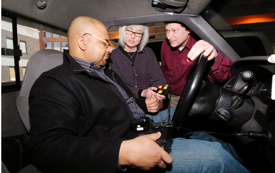
Figure 1. Driving rehabilitation is multidisciplinary.
Occupational Therapy
- Driving is an IADL – to be addressed by all practitioners.
- Occupational therapy practitioners with specialized education/training in driver rehabilitation
- Evaluate functional abilities essential to driving
- Recommendations in regards to fitness to drive
- Recommend modifications to vehicles
- Provide intervention
Presently, most driver rehabilitation specialists are occupational therapy practitioners. OT practitioners are skilled at addressing driving and community mobility as an IADL, and this is an area all OT practitioners should be addressing regardless of the practice area. Examples of occupational therapy interventions for driving include specialized seating for children or adult passenger safety. The occupational therapy practitioner also plays an important and valuable role in knowing when and how to refer to a driver rehabilitation specialist. These specialists are skilled in the evaluation of the physical, cognitive, and visual components required to drive a motor vehicle, to make recommendations in regards to fitness to drive, recommend modifications for driving motor vehicles, and provide intervention to facilitate driving.
ADED: The Association for Driver Rehabilitation Specialists
- A professional association dedicated to driving rehabilitation.
- Network of Professionals
- Includes OTs, PTs, KTs, driver educators/trainers, equipment manufacturers, mobility equipment dealers, educators, and researchers
- The mission includes promoting excellence in the field of driver rehabilitation, including advocacy and leadership.
The Association for Driver Rehabilitation Specialists or better know by the acronym, ADED, is a professional association dedicated simply to driver rehabilitation. ADED is a professional network promoting excellence in the field of driver rehabilitation, thought leadership, and advocacy in support of safe, independent community mobility. ADED offers a directory of driver rehabilitation specialists and certified driver rehab specialists, who are ADED members. This listing is updated in real-time, so as members retire, move to a new facility, or join the profession, clients, referral sources, and allied health providers are able to search for services in their area. ADED has established some guiding documents, and these are also provided to you, as participants, in this course's handouts.
- Best Practice Guidelines for the Delivery of Driver Rehabilitation Services
- Code of Ethics/Standards of Practice
ADED has both the best practice guidelines for the delivery of driver rehabilitation services and has set up a code of standards for standards of practice, to guide the driver rehab specialist in his or her practice.
- In order to promote the best outcome for clients, prudent clinical judgment should be used at all times, including consideration of applicable laws and other guidelines or resources that may exist regarding the delivery of driver rehabilitation services.
- Keep driver evaluations
- standardized
- formalized
- objective
ADED's driver rehab specialist practice is guided by the ability to promote the best outcome for clients. Prudent clinical judgment should be used at all times, including the consideration of applicable laws, and other guidelines or resources that may exist, regarding the delivery of driver rehab services. These best practice guidelines were established to help keep driver evaluations standardized, formalized, and objective.
- It is ADED’s position that any person involved in the delivery of driver rehabilitation services (including but not limited to driver rehabilitation specialists [DRS], driver educators, allied health professionals, mobility equipment vendors, manufacturers, and clients) will conduct themselves in an ethical and professional manner. Driver Rehabilitation Specialists possessing the CDRS™ (Certified Driver Rehabilitation Specialist) certification are committed to such compliance.
Why Do You Need To Know This?
Why should we be talking about driving? Many of you already see the need to understand these services; however, let me reinforce your commitment to understanding. For those who are not fully sure they need to know about driving and community mobility, I would like to take a minute to share my story, and how I became involved in driver rehabilitation. I worked for a smaller, regional hospital in Western North Carolina, and as for most startup programs, the decision came from administration and physicians to find some way to address driving for all of their folks graduating from inpatient or outpatient rehabilitation services. Physicians simply do not have the time or the resources to address driving, and the other professionals involved in the rehabilitative services also did not have the resources, time, or expertise to address driving. Thus, it seemed like OT was the best fit to address driving. We were offered the chance to go to some training in Orlando, Florida, and who is not going to take a free trip to Orlando? I had absolutely no idea what I was getting into it. I thought, "Great. I'll go for a quick trip down to Florida on the company dime, and I'll learn how to throw some tests together and make a judgment." This is such a bigger process than I had ever imagined, but it is so important. I came home exhausted, but I also came home exhilarated.
Driver rehabilitation encompasses a clinical assessment, a behind-the-wheel assessment, the ability to help your clients to problem solve complex situations, and to work with their caregivers and other resources to help them achieve their ultimate goal of being independent in the community.

Figure 2. The goal of independent mobility.
Driving and community mobility is an IADL and is defined as follows. It is the planning and moving around in the community and using public or private transportation, such as driving, walking, bicycling, or accessing and riding in buses, taxi cabs or other transportation systems. It is important to note this IADL change, in the 3rd edition of AOTA's practice framework.
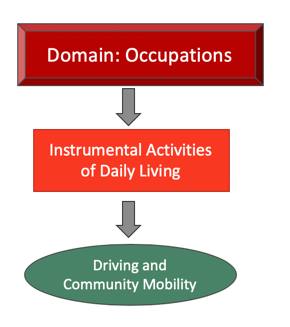
Figure 3. IADL change in AOTA's practice framework.
Previously, the IADL was community mobility, and driving was a subcategory. This change recognizes that driving is the most frequent method of community mobility. Driving and community mobility are at the center of all human occupation. In order to participate in any of these areas, and maintain our roles as parents, children, employees, students, friends, et cetera, we need to be able to travel from point to point and to do it safely and independently. Transportation is embedded in nearly every human occupation. Again, we ask, why should occupational therapists address driving?
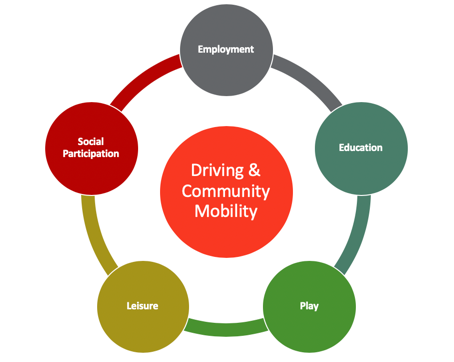
Figure 4. Areas of driving and community mobility.
The Importance of Driving
- Independence
- Identity
- Connections to others
- Cessation of driving can lead to poor health outcomes, increased health care costs, and decreased access to care (Marottoli, 2000).
- Driving is the most meaningful IADL for 27 out of 30 individuals with stroke and caregivers (Dickerson, Reistetter, & Gaudy, 2013).
Driving holds value for individuals across the lifespan, whether it is a new driver or someone who has driven for 60 years. For older adults, driving is about independence. It is about their identity of using the car to engage and connect with others. Evidence shows us that it is important to acknowledge the significance that driving plays on independence and that depression increases for many older adults after driving cessation. Additionally, another study by occupational therapists demonstrated that driving was the most meaningful IADL for those that had a stroke and their caregivers. References for these studies will be provided at the end of today's session. Driving and community mobility are IADLs and are within OT's scope of practice.
What Client Populations?
- ALL – clients need this IADL addressed!
- Referrals for the specialized skills of the DRS:
- Clients recovering from a medical condition
- Drivers with progressive diseases
- Novice drivers who need specialized equipment and/or learning
- Community mobility for the client as a passenger (equipment)
We must address this IADL with all clients. It may be by helping a caregiver assist his or her spouse in and out of a vehicle or transporting a child with developmental disorders. The practitioner also needs to learn when to refer to the driving rehabilitation specialist (DRS). Some of these situations may be clients recovering from medical conditions such as a right below-knee amputation, stroke, rotator cuff injury, or chronic obstructive pulmonary disease. Drivers with progressive diseases such as multiple sclerosis, Parkinson's, or dementia could benefit from a referral to a specialist. Additionally, novice drivers who need specialized equipment or customized learning or training, such as a child with attention deficit hyperactivity disorder, may benefit. Finally, a specialist can also assist with community mobility for the client as a passenger who might need special equipment to enter/exit the vehicle or stow their mobility device.
Models of Delivery
- A broad range of occupational therapy contexts
- Across the lifespan
- Across medical conditions /disabilities
- Unique value – of occupational therapy
- Use occupational therapy skills applied to complex, demanding and high-level IADL- driving
- Consider the needs of that person at that time
- Identify the needs of the client for driving
- Role of generalist
- Role of a specialist in driver rehabilitation
As occupational therapy is appropriate for clients of all ages, driver rehabilitation services must also be considered across the lifespan from making sure a child with disabilities sits appropriately in their car seat to the older adult needing assistance and alternative transportation after retiring from driving. As you will also recognize, driver rehabilitation may be necessary for many persons with multiple medical conditions and disabilities. One of the objectives of this course is to empower you with the understanding that referral to specialized driver rehab service is the best choice in some cases.
There are also cases where the skills and knowledge at the generalist level are sufficient. This requires that you build your understanding of driving and community mobility, and the services offered by the specialists in driver rehabilitation. What I want to describe is how the general practice and the driver rehab specialist can work collaboratively together to best meet the needs of the client. The unique and distinctive value of occupational therapy is using activity analysis, observational skills, and clinical reasoning. When occupational therapy practitioners observe complex, demanding and high-level IADL tasks, they can apply that knowledge to the complex activity of driving.
Next, I am going to introduce an important document that explains the spectrum of driver services, including general practice OTs and driver rehab specialists. This document will also assist you in determining the right service for the right person at the right time.
Spectrum of Driver Services
- Pathways from general practice to specialized services.
- Pathways from community-based to medically-based services
- The diverse types of driving programs.
The spectrum of driver services, also provided to you as a handout for this course, was a federally funded project, sponsored by the National Highway Traffic Safety Administration. ADED and AOTA collaborated on the project with the goal of describing and defining the whole range of driving services. The first page lists the different types. The document is shaded to show the different categories of services, with the darker ones being the most complex. We will review this document to go over the different pathways between general practice occupational therapy services and the specialized services of the specialist. It also illustrates the diverse types of driving programs. I know it is difficult to read in detail here, but let's just go through how this document is organized.
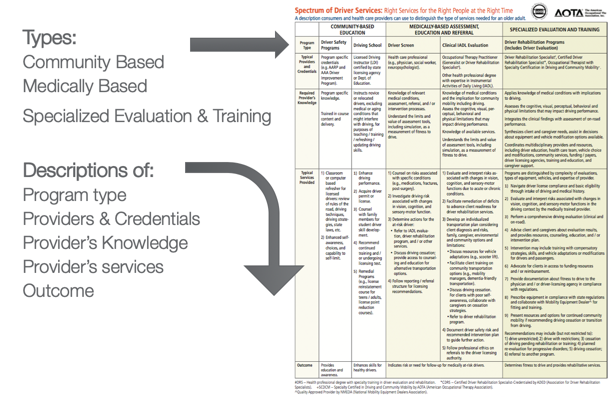
Figure 5. The Spectrum of Driver Services document.
The top arrow shows the program types. The names of the programs are across the top, in the first top two rows. These include the community-based in white, the medically-based shaded in lighter yellow, and the specialized evaluation and training in the darker yellow on the far right side. The lower arrow shows the first column. This column lists the titles for the descriptions of each of the programs. These include the program type, such as driver safety, driving school, or driver screening programs, and who the providers are and their credentials. Additionally, the document defines the provider level of knowledge, their knowledge base, the services the provider offers, and finally, the outcomes to be expected from those specific programs. Let's look at those a little bit more closely in Figure 6.
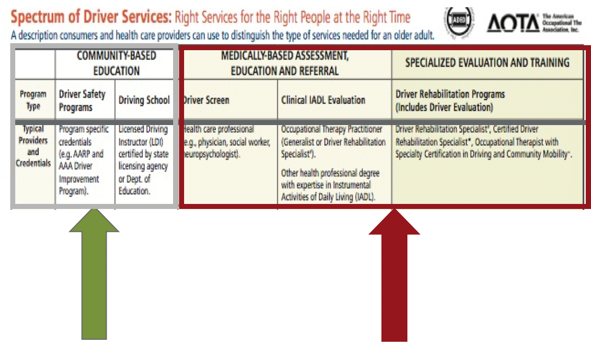
Figure 6. A closer look at the Spectrum of Driver Services document.
You can see the first rows of the dark lines show the types of the program with the typical providers and credentials described underneath. The box with the green arrow is the community-based programs with the driver safety programs and driving schools. The red box and arrows are those services and providers who have medical backgrounds or professions. The medical programs are specifically shown in Figure 7.

Figure 7. Medical programs.
The orange box highlights the medical professionals that can do driver screens. These might be in a physician's office or by a social worker. These are short assessments or tests that indicate that future evaluation is needed or not needed. The blue box is our familiar clinical IADL evaluation or assessment of components underlining driving abilities and skills. This may be a full IADL evaluation done by a general practice occupational therapist, or it may be a driver rehab specialist, who is doing the clinical portion of the comprehensive driver evaluation. Finally, the green box outlines the specialized services of the driver rehab specialist. As you can see, their skill level has more complex tasks for driver assessment, training and/or comprehensive driver evaluation.
Here is another look at this document in Figure 8.

Figure 8. Typical providers and credentials.
Let's review some examples to help this a little bit more understandable. How can the spectrum document assist in how to make recommendations for:
- A 75 y.o. male who had a stroke and wants to know if he can drive again
- The wife of a stroke survivor who has not driven often since retirement and a move to Florida
- A teen on the spectrum who wants to get their permit
A general practice occupational therapist is treating a 75-year-old male, that had a significant stroke and wants to drive again. If he calls a driving school or gets screened by his physician, he should be referred for either an IADL evaluation or for a comprehensive driving evaluation. You see, the effects of a stroke can be wide-ranging, and impact a number of skills required to safely operate a motor vehicle. The services of driver rehab specialists would be indicated here. Another example is the wife of the stroke survivor does not have a medical condition. Her husband is no longer able to drive, due to his deficits, and she is now responsible for the couple's community mobility. However, this wife has not driven much in the past few years and is not confident to go back to driving.
